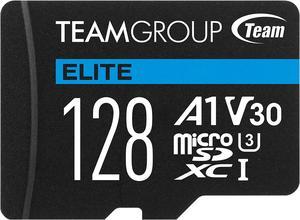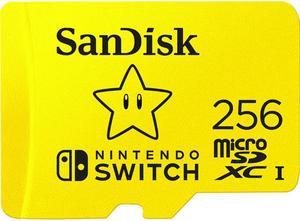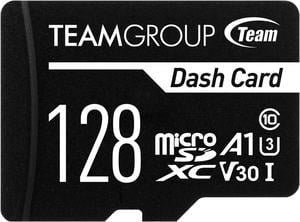- Home - Thailand
- Components & Storage
- USB Flash Drive & Memory Card
USB Flash Drive & Memory Card
- Shop Category
- Capacity
- USB Specification
- Show More
- Ready Boost
- USB Connectors
- Security
- Brands
- Show More
- All Top Brands
- Availability
- Sold by
- Useful Links
- Customer Ratings
USB Flash Drive & Memory Card Featured Items
Shop all products
- Brand: Team
- Series: C186
- Capacity: 32GB
- USB Specification: USB 3.2 Gen 1
- Model #: TC186332GB01
- Item #: N82E16820331261
- Return Policy: International Order Return Policy
- ฿303.87 –
- More options from ฿303.87 - ฿790.00
- ฿1,030.58 Shipping

- Card type: MicroSD
- Speed Class Rating: UHS-I / U3 / A1 / V30
- Read Speed: Up to 100MB/s
- Write Speed: Up to 50MB/s
- Model #: TEAUSDX128GIV30A103
- Item #: N82E16820331311
- Return Policy: International Order Return Policy
- ฿529.64 –
- More options from ฿529.64 - ฿1,616.76
- ฿1,035.42 Shipping

- Brand: SanDisk
- Type: microSDXC
- Capacity: 256GB
- Speed Class Rating: UHS-I
- Model #: SDSQXAO-256G-GNCZN
- Item #: N82E16820173265
- Return Policy: International Order Return Policy
- ฿1,318.23 –
- More options from ฿1,318.23 - ฿2,493.09
- ฿1,070.80 Shipping

- Brand: Team
- Series: C186
- Capacity: 128GB
- USB Specification: USB 3.2 Gen 1
- Model #: TC1863128GB01
- Item #: N82E16820331263
- Return Policy: International Order Return Policy
- ฿454.74 –
- More options from ฿454.74 - ฿781.26
- ฿1,030.58 Shipping

- Speed Class Rating: A1 / Class 10 / U3 / UHS-I / V30
- Read Speed: Up to 100MB/s
- Write Speed: Up to 30MB/s
- Model #: TDUSDX128GUHS03
- Item #: N82E16820331179
- Return Policy: International Order Return Policy
- ฿793.93 –
- More options from ฿793.93 - ฿1,570.75
- ฿1,030.58 Shipping
There are many different types of memory cards that allow you to expand your usage of devices, including your camera, smartphone and tablet. USB flash drives are a cheap, ultra-compact solution for storing your files, and their portability and compact size offer the convenience of transferring data easily. They come in several designs, data transfer speeds and storage capacities.
SD Memory Cards Are an Increasingly Popular Option to Store Files
SD™ memory cards are common in digital cameras, smartphones and tablets to store photos, videos, apps and files. Various memory cards come with different specifications, such as SD, SD High Capacity (SDHC™) and SD Extended Capacity (SDXC™). Standard SD cards come with different storage capacities, from 128MB to 2GB. They're compatible with all SD slots, including the SDHC and SDXC ones. SDHC memory cards have a bigger storage capacity, up to 32GB. They're not backward compatible with devices that only support standard SD cards. SDXC cards can store up to 2TB of data. Consider card readers to handle data transfers.
Mini SD and Micro SD Cards Can Store Photos and Videos From Your Smartphone
Mini SD and Micro SD memory cards are smaller than the SD ones, and they're increasingly common in cell phones. If you need to fit a Mini or Micro SD card into a full-sized SD slot, there are easy-to-use adapters. This way, you can conveniently transfer photos from your computer to your digital camera. The size of the memory card doesn't affect its performance, as the mini and micro versions come with the same standard storage spaces as the full-sized ones.
USB Flash Drives Have Different Speeds Based on Their USB Version
USB flash drives use non-volatile memory to store your documents, photos and videos. Unlike desktop and laptop memory-expanding components, flash drives are compact and portable, and they're a convenient solution to transfer files between computers. Unlike cloud storage services, the compact drives work offline, so you can backup your files when you don't have an internet connection available. Flash drives come in different data transfer speed, based on their USB version. The USB 3.2 standard handles up to 2500MBps, and the USB 3.1 transfers data at 1250MBps. USB 3.0 pen drives have a maximum speed of 625MBps, and USB 2.0 drives can only handle 60MBps. The most recent USB versions are backward compatible with the older ones. However, the data transfer speed depends on the USB version of a port. For example, if you use a USB 3.2 flash drive with a USB 2.0 port, you'll be able to transfer data at a maximum speed of 60MBps.
USB Pen Drives Have Different Storage Spaces to Fit Everyone's Needs
When considering capacities, USB flash drives, come in a wide variety of standard storage sizes. The most common sizes are 4GB, 8GB, 16GB, 32GB, 64GB and 128GB. Typically, more storage space available on the drive results in a higher cost. A 4GB pen drive is a cost-effective solution to carry around documents and smaller files. 8GB and 16GB drives can contain a large music library and several movies.





